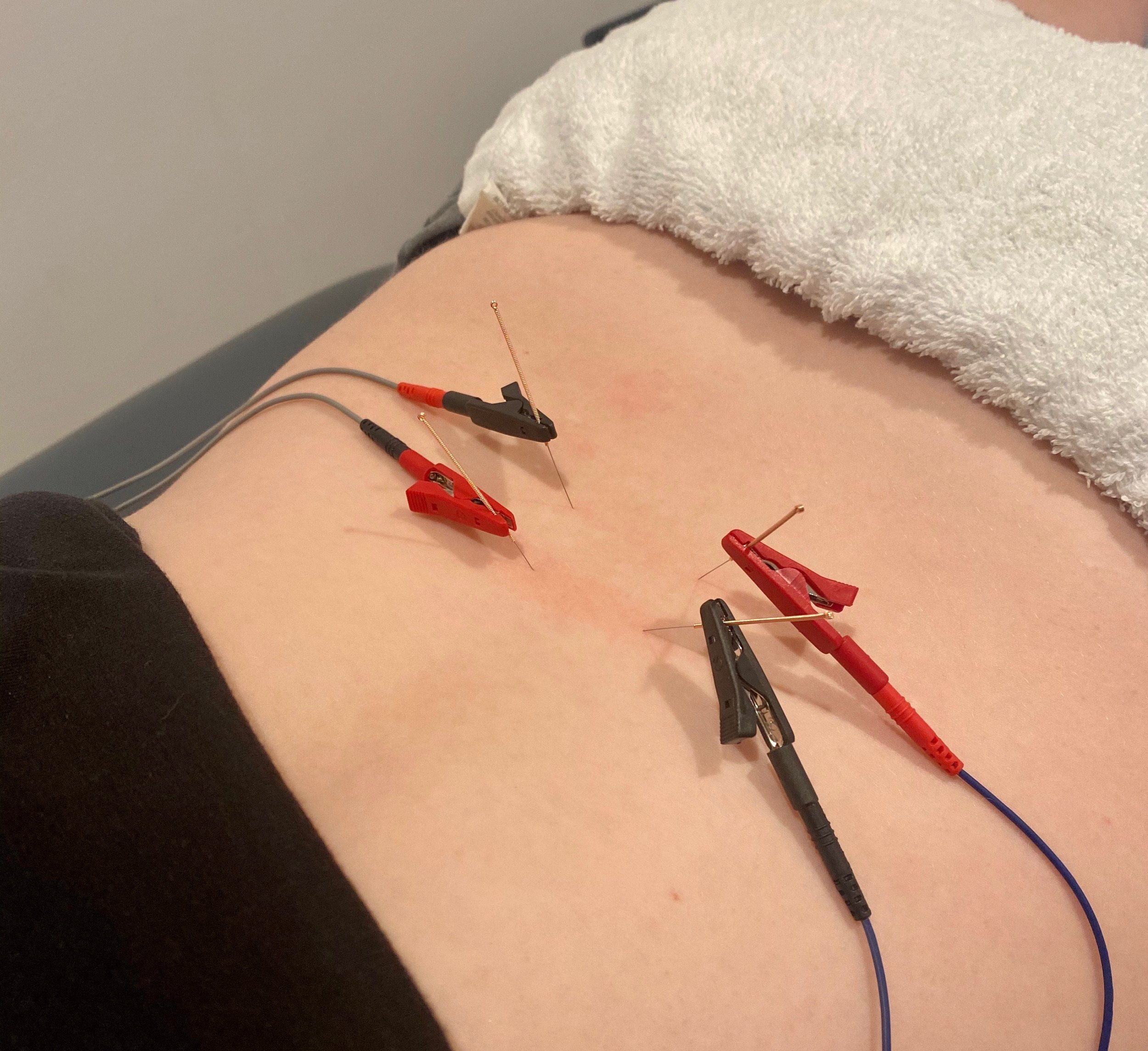updarted: December 2024
Before moving to Seattle, Dr. Carli Kavanagh practiced physical therapy in Houston, TX and Chicago, IL. One of the tools she frequently used in treating was dry needling. Up until recently, dry needling was not in the practice act for physical therapists in the state of Washington.
We are happy to report that we can now legally offer this service at Arrow PT!
What is dry needling?
Dry needling is another treatment to further aid in pain relief. It uses a thin needle to penetrate the skin to directly interact with the tissue to relieve myofascial trigger points. The needle is considered dry because it does not contain medication to inject.
IS there a difference between dry needling + acupuncture?
The fundamental difference between these techniques is that dry needling is based on human anatomy and neurophysiological principles, while acupuncture is based on traditional Chinese medicine relating to the flow of energy through your body.
For physical therapists, dry needling is an effective tool for pain management. We use it alongside manual therapy, corrective exercise, and strengthening in order to address movement patterns or asymmetries that may be contributing to the pain presented.
If you are interested in acupuncture, we recommend these providers.
What does it feel like?
Often a deep ache is felt where the needle is interacting with the tissue. Mild to moderate muscle soreness similar to a workout can follow, but pain relief is usually experienced right away or within 24-48 hours. It may take multiple sessions to build a cumulative effect. After the needling, we will work on corrective exercises to address the movement dysfunctions present.
Dry needling is dosed in order to meet the specific needs of the patient. Changing the size, number, technique, and/or placement of the needle can influence the intensity of the sensation. Electrical stimulation, similar to a TENS unit, can also be used to stimulate the needles to further affect the tissue.
All of these factors are adjusted based on the patient’s response during and after the treatment.
IS IT SAFE?
One of the concerns of needling is whether it is safe or not. While there are risks to any medical intervention and we want our patients to make decisions that feel right for them, the literature shows that needling is safe! A study done in 2020 by Boyce et.al, examined 420 PTs who performed over 20,000 dry needling treatments. There were zero reported injuries to the lungs, abdomen, or pelvic region.
The most common side effect of dry needling is soreness during and after treatment. Other side effects are typically minor but may include:
bleeding
stiffness
bruising at or near the insertion site
fainting
muscle fatigue
Extra care and assessment is taken for patients with a fear or needles, patients with a history of abnormal reaction to needling or injections, patients with a bleeding disorder or who are on an anticoagulant medication, and patients who are pregnant. Consent is always obtained prior to including needling in your treatment plan.
Read on to learn more about Carli’s clinical experience with dry needling:
Once Carli completed comprehensive training, she used dry needling daily as a PT while living in Houston. Her needling training is rooted in a neuromuscular approach meaning it looks at your pain from a comprehensive, whole body perspective. This allows her to get to the root cause of the issue and any underlying complicating factors. A few examples of the success she had include helping a woman sleep at night while suffering from a frozen shoulder, allowing a father relief from severe nerve pain so he could get back to playtime with his kids, and keeping a tennis player competitive while rehabbing her tennis elbow.
Dry needling can also help with these issues:
tendinitis
headaches
sciatica
low back pain
arthritis
neck pain
fibromyalgia and other pain disorders
trigger point relief
whiplash
disc pain
In Carli’s experience, she’s never had any serious adverse effects, only very minor bleeding or bruising in a small percentage of people. And we want to emphasize that while dry needling is only recently allowed in Washington State, Carli has extensive training and experience as she was able to use this tool in her practice before moving to Seattle
Where can I sign up?!
Please feel free to contact Carli with questions about the treatment or to see if this type of PT is right for you!! carli@arrowptseattle.com
You can also get scheduled here:
References
Boyce, D., Wempe, H., Campbell, C., Fuehne, S., Zylstra, E., Smith, G., Wingard, C., & Jones, R. (2020). Adverse Events Associated With Therapeutic Dry Needling. International Journal of Sports Physical Therapy, 15(1), 103–113



